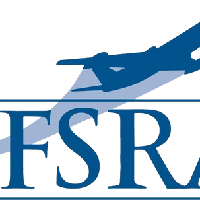Officials at Lawton-Fort Sill Regional Airport have come up with a solution for nearby property that is unusable for anything other than growing grass.
The airport holds an avigation easement on property located northwest of the runway, on the east side of South Sheridan Road along the airport’s western boundary. That easement, held by the airport since 1949, means the airport controls the airspace above the property and it is so strict, essentially anything higher than a blade of grass is prohibited, Airport Director Barbara McNally said. The easement specifies the tract must be kept clear of all trees, poles, buildings, wire and other obstructions of any kind.
McNally said the easement was put into place by the city decades ago to protect the airport property, but it also means severe limits on what property owners could do with their land. The airport has been looking at the issue for years. Concerns surfaced late last year because Great Plains Improvement Foundation — which purchased the tract about 10 years ago — wanted to build an apartment complex there. The avigation easement prevents that project, airport attorneys said.
“It’s basically worthless because we’ve told them they can’t develop it,” McNally said.
The issue is further complicated by the fact that some development was allowed on other adjacent land, including residential homes built in the 1960s.
McNally said negotiations found a solution for the problem: amending the avigation easement lease to allow structures up to 25 feet high. She said that is the height of a single-family residence, meaning while traditional houses could be built on the tract, taller buildings could not.
“It prevents apartments,” she said of the airport’s efforts to control development that could conflict with runway operations. “It allows the city to manage the land for us.”
City management means anyone developing the tract must follow city planning and building codes, to include the 25-foot height restriction.
McNally said the property between Douglas Avenue and Bishop Road is protecting what exists at the airport today, to include its runway. She doesn’t foresee a time when the airport would need the land for expansion, which had been the original idea behind the avigation easement granted in 1949. McNally said because of extensive residential development to the north of the airport, officials would expand to the south if they decide in the future to expand the runway or other airport amenities.
Want to reach a local audience and grow your business?
Our website is the perfect platform to connect with engaged readers in your local area.
Whether you're looking for banner ads, sponsored content, or custom promotions, we can tailor a package to meet your needs.
Contact us today to learn more about advertising opportunities!
CONTACT US NOW





